Duque 70
Designed by João Santa-Rita, Duque 70 is the result of the rehabilitation of 4 historical buildings of traditional design, adapted to the comfort needs of modern life. In this project, the main objective was to create a website that would increase leads with easy navigation and a focus on images.
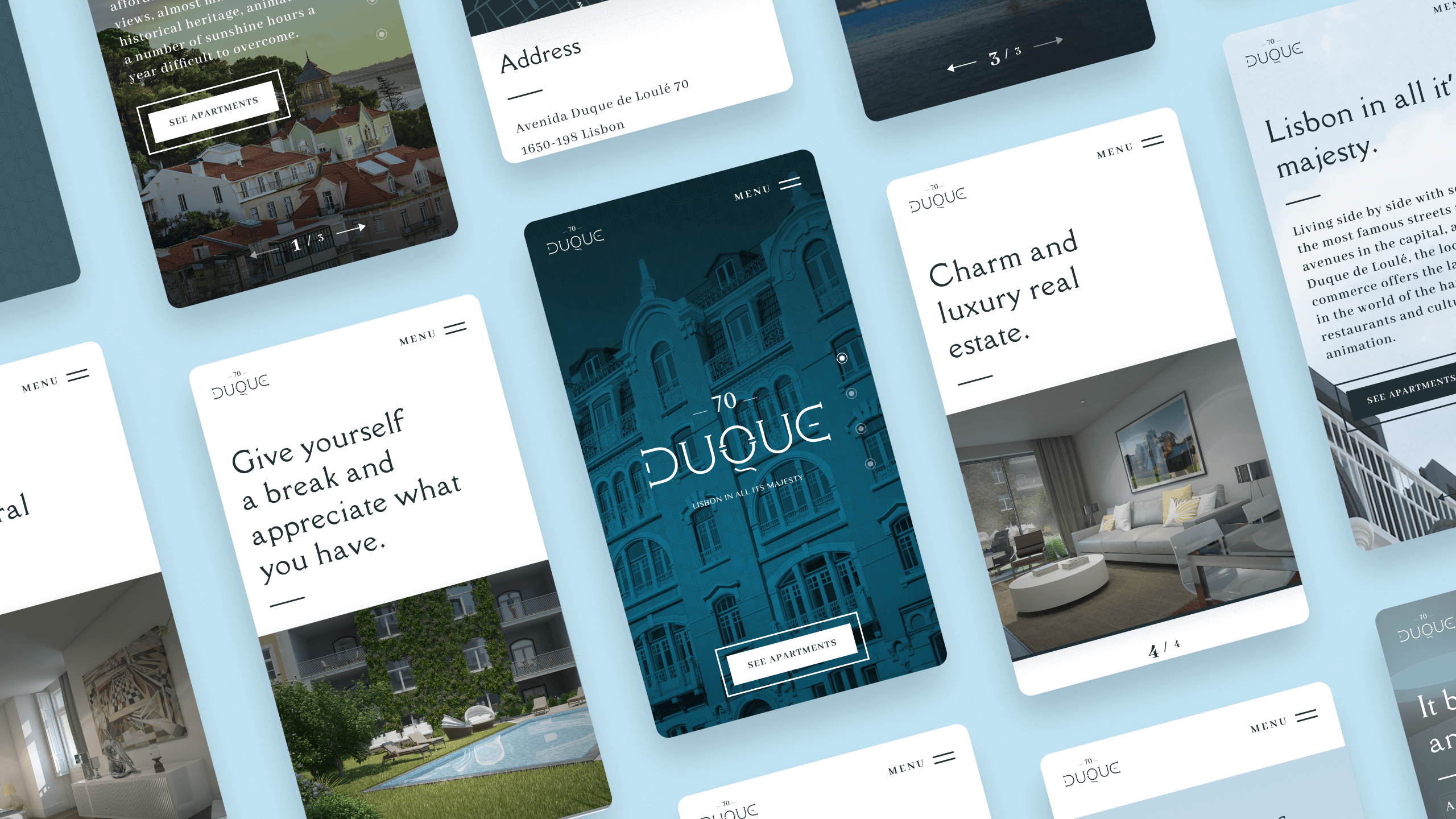
Team
UX Lead Designer
2 Full stack Developers
1 Project Manager
My role
As a key contributor, I led the research and design process for the user experience and interface. I collaborated closely with the brand team to optimize their work on the identity. In addition, I managed the smooth handoff of all necessary documentation to the development team.
Problem space
After conducting thorough generative research, I used some different methods: user interviews and competitor analysis. These methods provided me with valuable insights into the needs and preferences of potential customers, while the competitor analysis helped me identify areas of opportunity and strategies for differentiating from the competition. By using these methods, I was able to gather useful data and insights that informed the project strategy and tactics aligning whit business goals.

Problem statement
How might we assist a real estate firm in developing a website that is optimized for generating leads, is user-friendly, and has easy navigation, while also enhancing the localization of the building?
Project goals
The primary goals of a real estate website are to generate leads, enhance user experience, showcase property listings, build brand awareness, and drive traffic. A well-designed website should feature compelling property listings, clear navigation, be mobile-friendly, and use effective digital marketing strategies to attract and retain visitors. By achieving these goals, a real estate website can increase brand awareness, generate more leads, and ultimately drive more sales.
Uncovering user insights
Property Listing Showcase: To attract potential customers, the website should feature high-quality images and detailed descriptions of each property.
Brand Awareness: To create brand awareness, the website should feature engaging copywriting, high-quality visuals, and consistent branding to effectively communicate the company’s unique selling propositions, expertise, and values.
First explorations
Wireframes are essential for designing a real estate website as they provide a blueprint for the site’s layout, functionality, and content. The wireframes for a real estate website should consider the needs of both buyers and sellers and include clear navigation, easy-to-use search function, and visual elements such as high-quality property images and virtual tours. With a well-planned wireframe, the real estate website can offer a seamless user experience and attract potential clients.
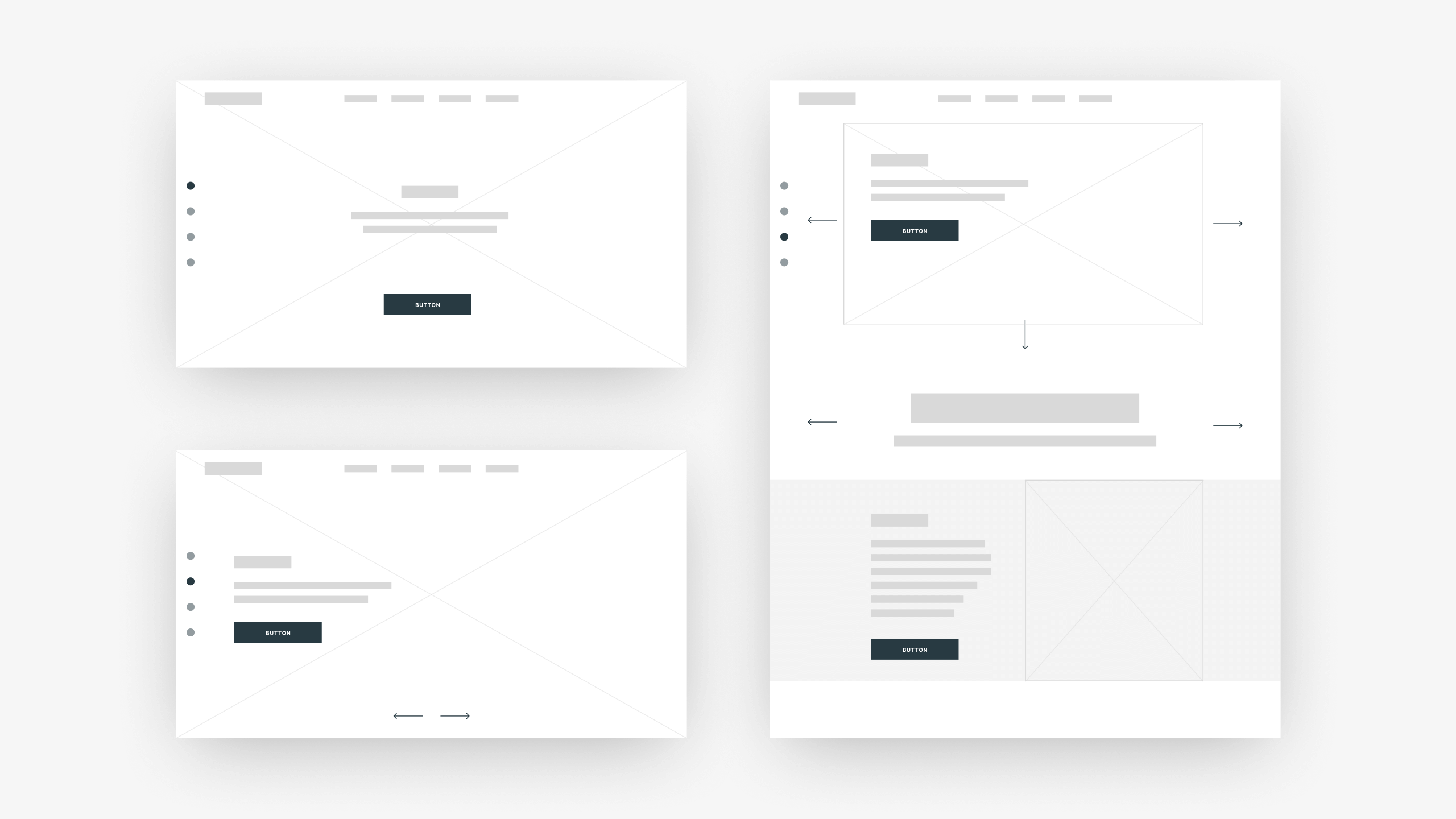
Solution
This is a solution design we created for a website project. The design carefully planned the website’s layout, functionality, and content to meet business goals and user needs. The end product delivered a high-quality user experience and met the client’s expectations.
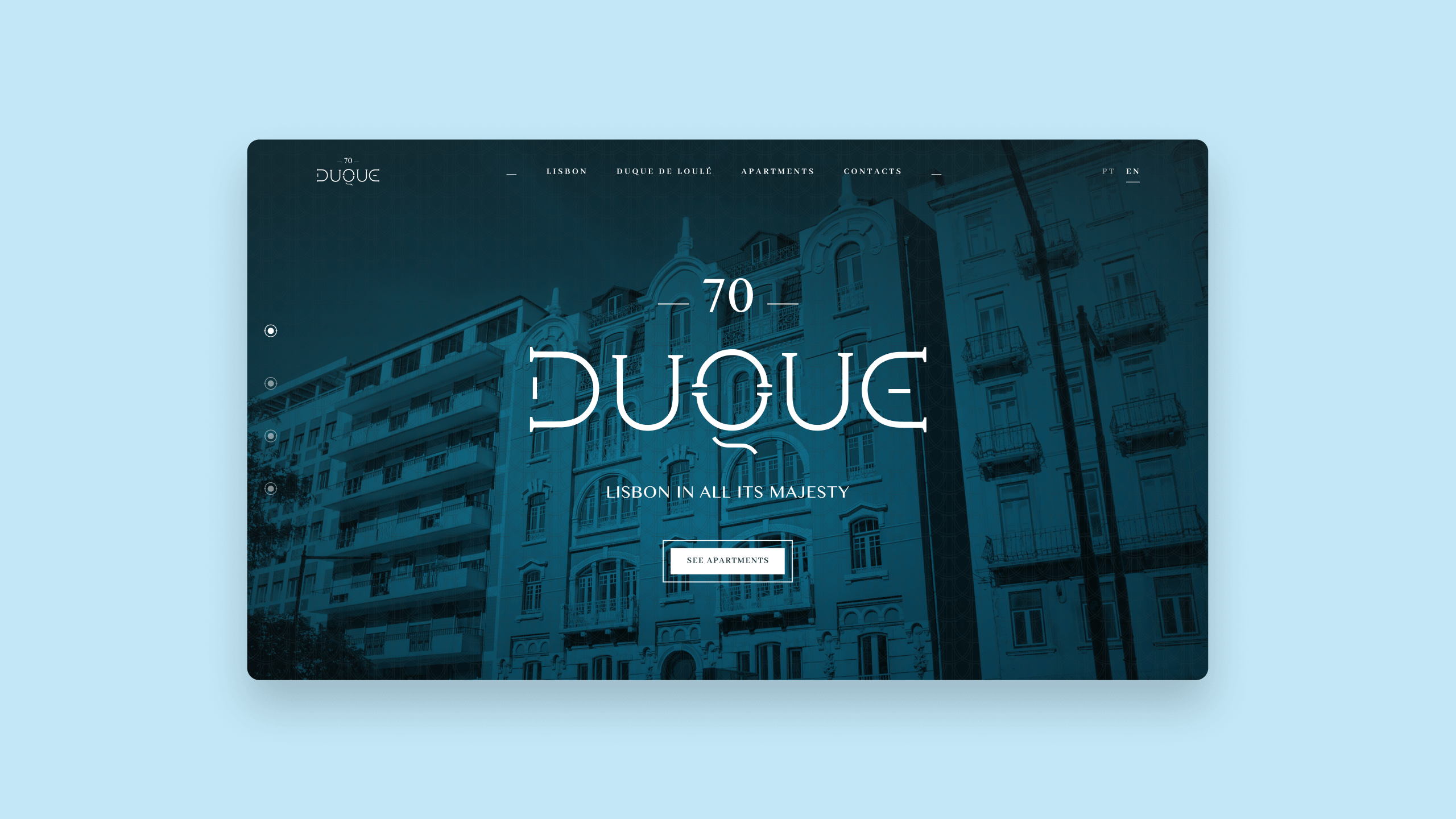
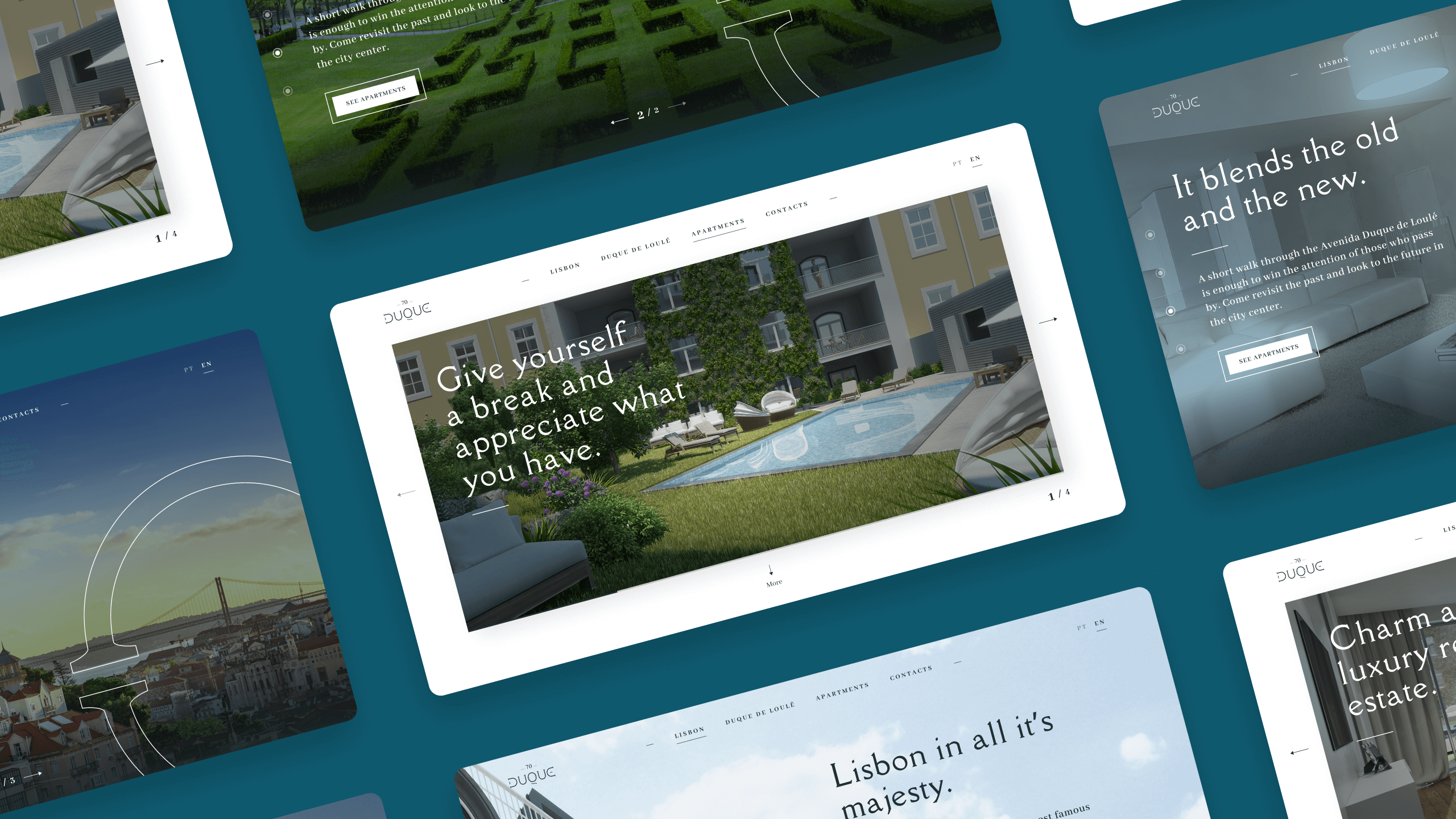
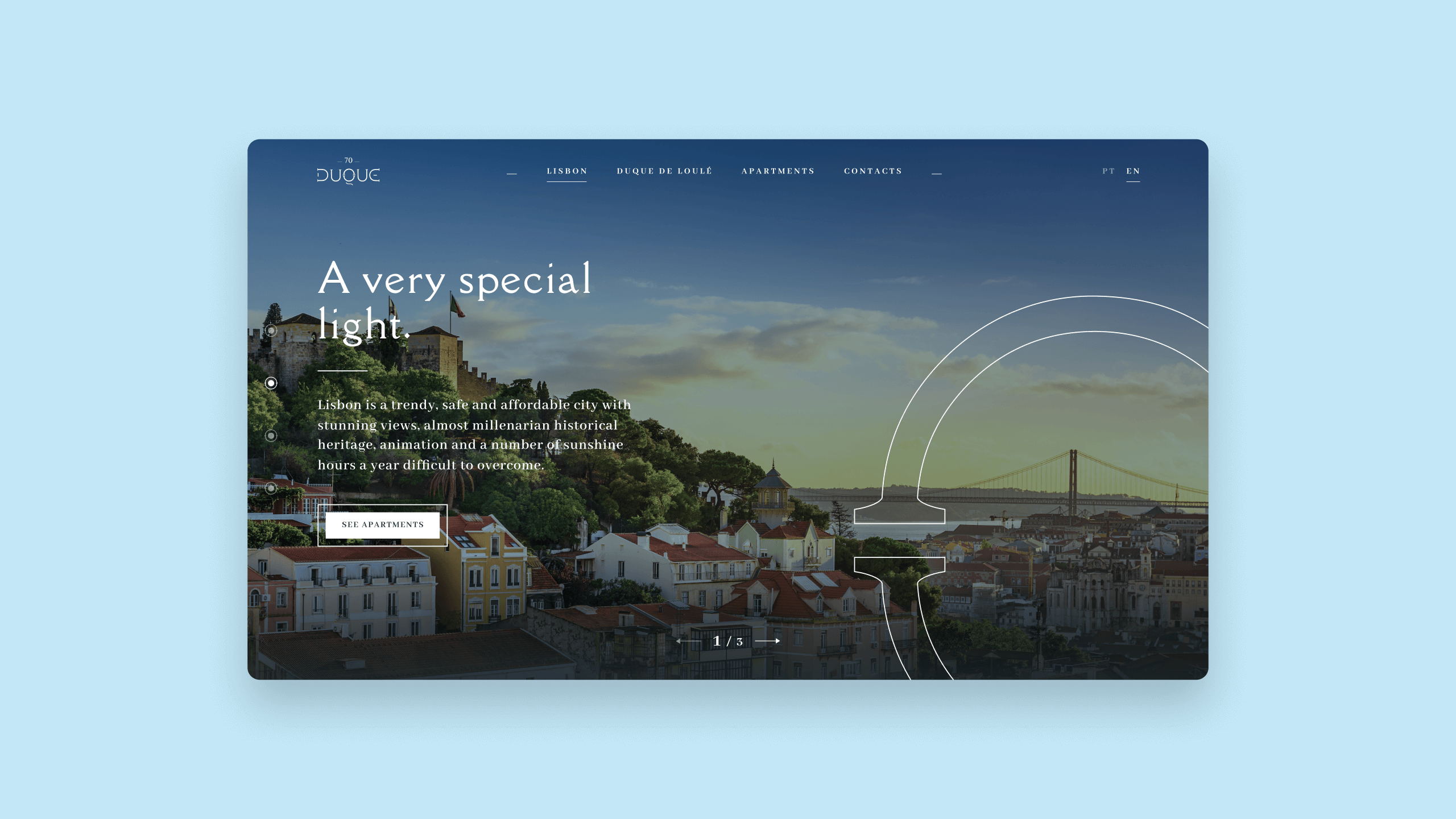


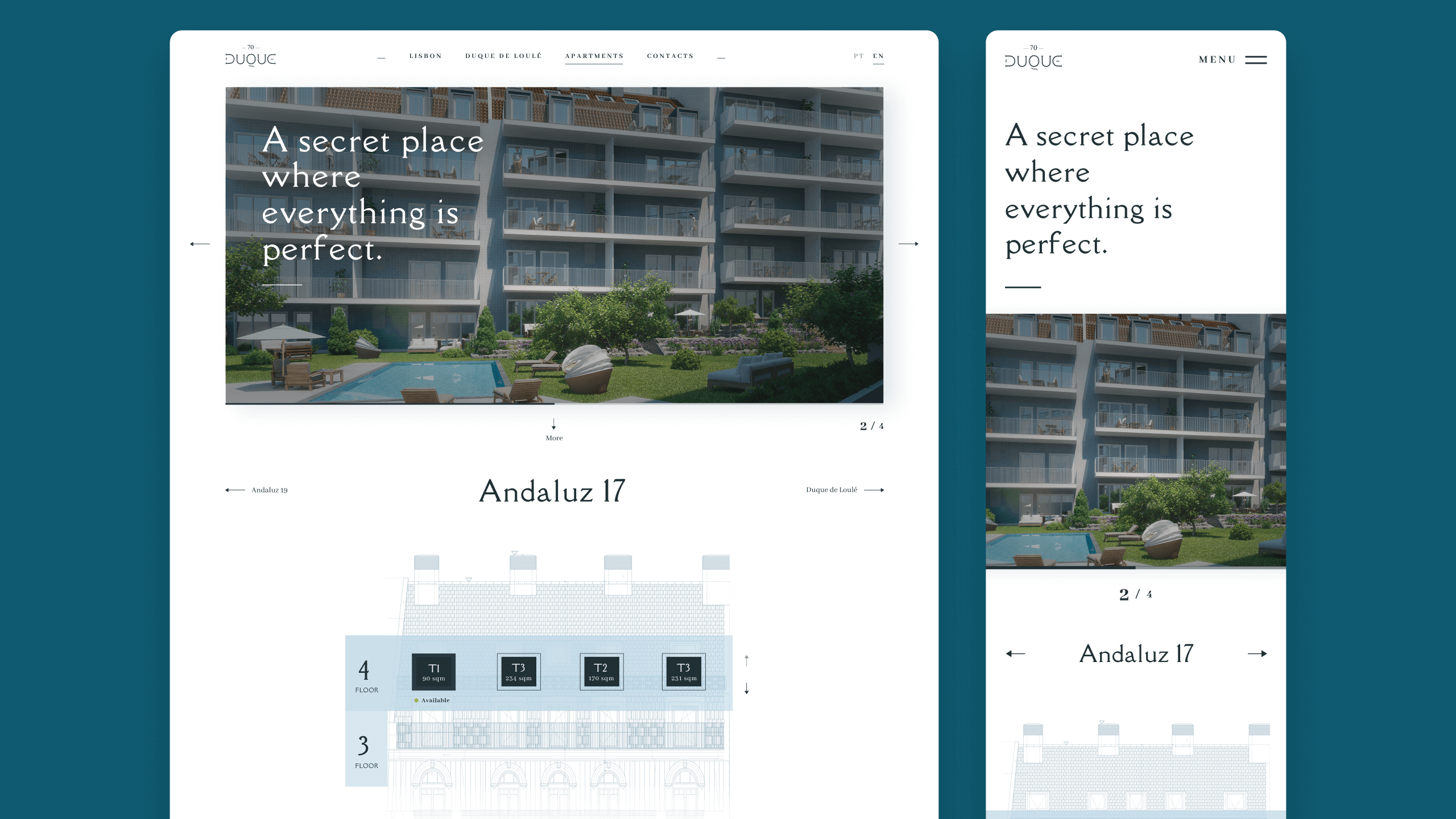
Results
This real estate website design project focused on creating a user-friendly interface that optimized the user experience for prospective buyers and real estate agents.
The website also had a lead generation system that generated a large number of qualified leads, contributing to over 75% of the total sales revenue for the client.
The final design was effective in meeting the project requirements and increasing the client’s sales revenue through an optimized website.
More works
Talkdesk Resource Center
Redesigned the Resource Center area of Talkdesk’s website to improve the user experience and make it easier for visitors to find relevant content.
YMC
Redesigned to improve the user experience and modernize the design of YMC’s website, creating a more engaging and accessible online presence for the company.

